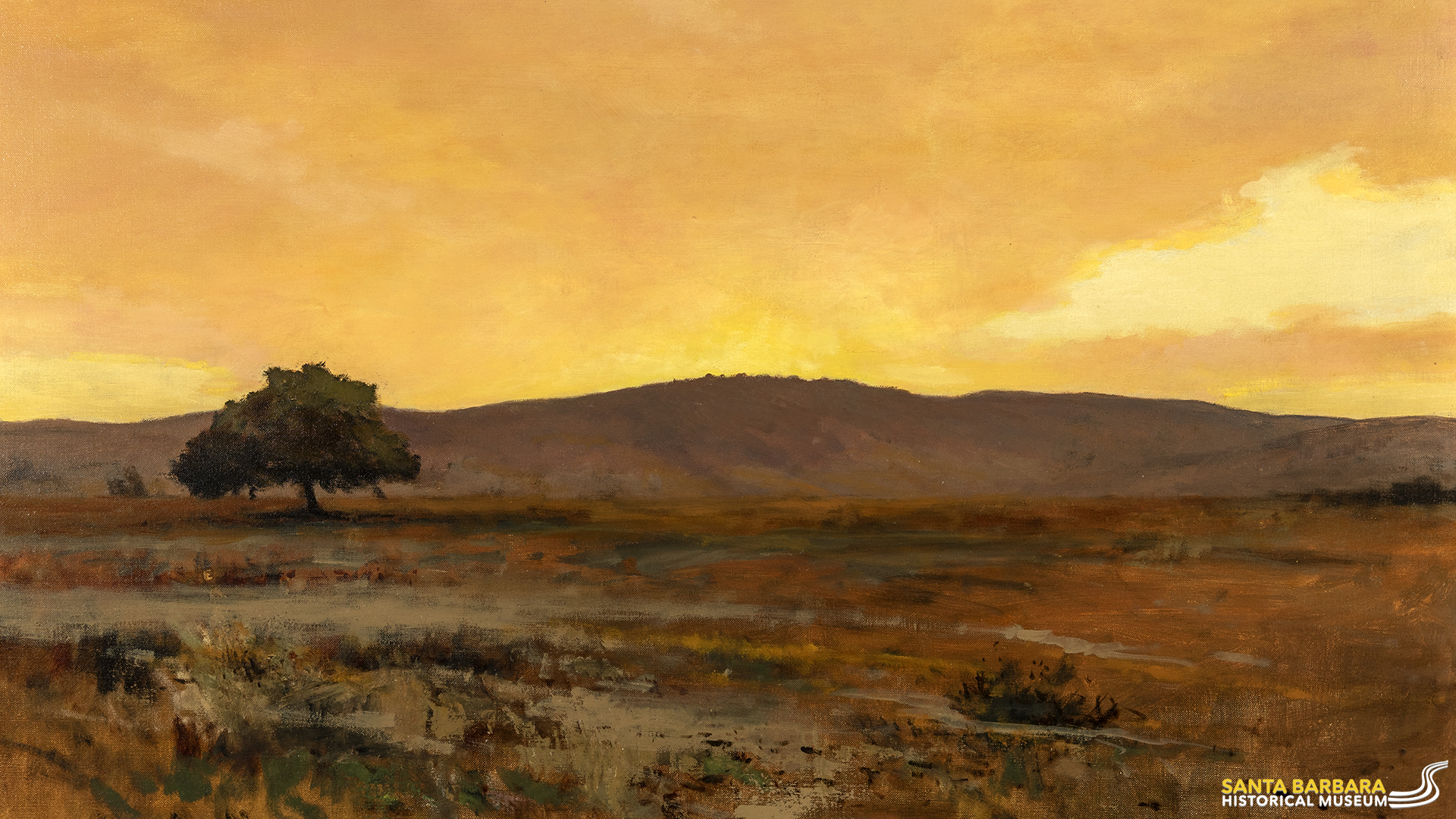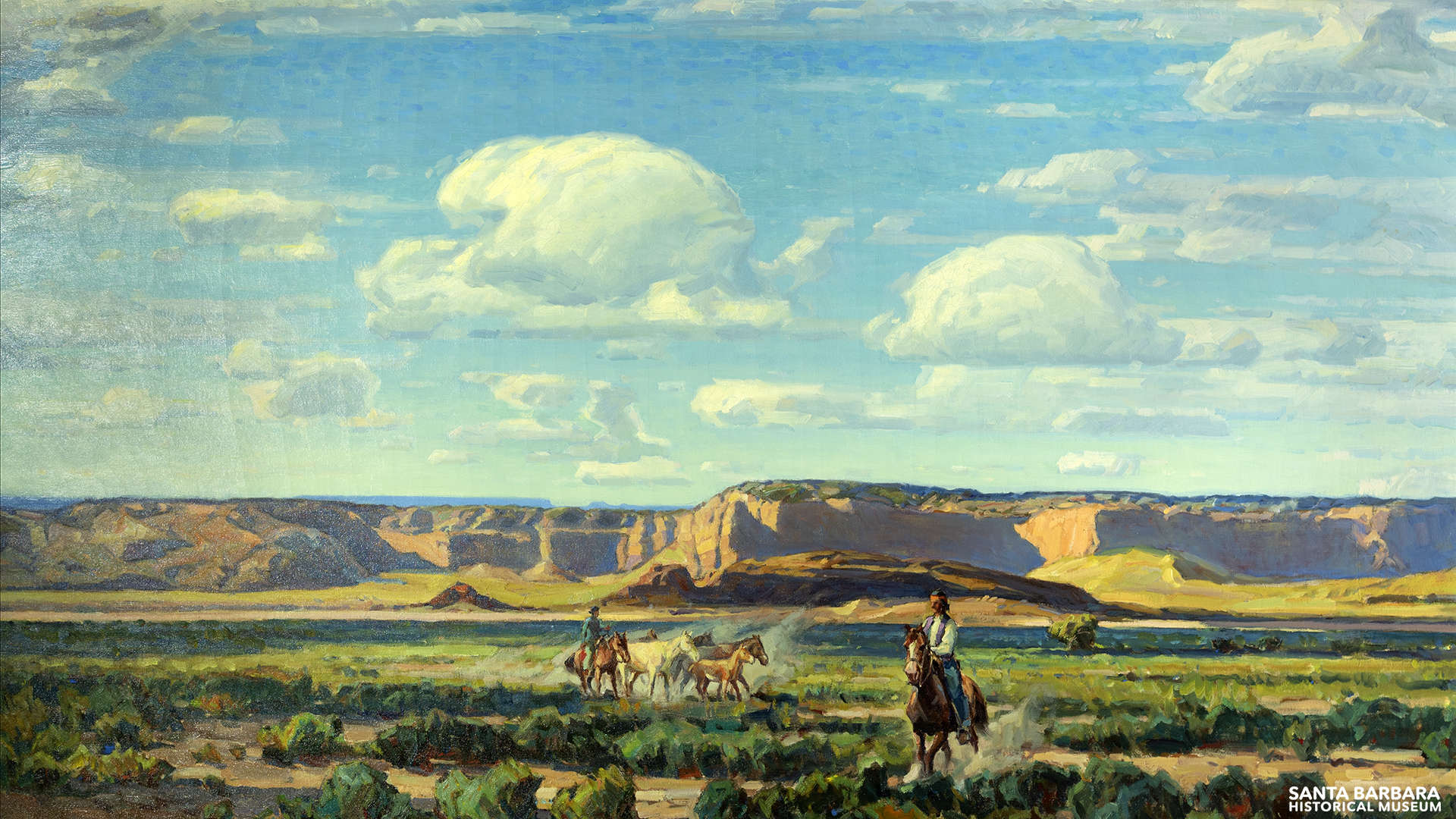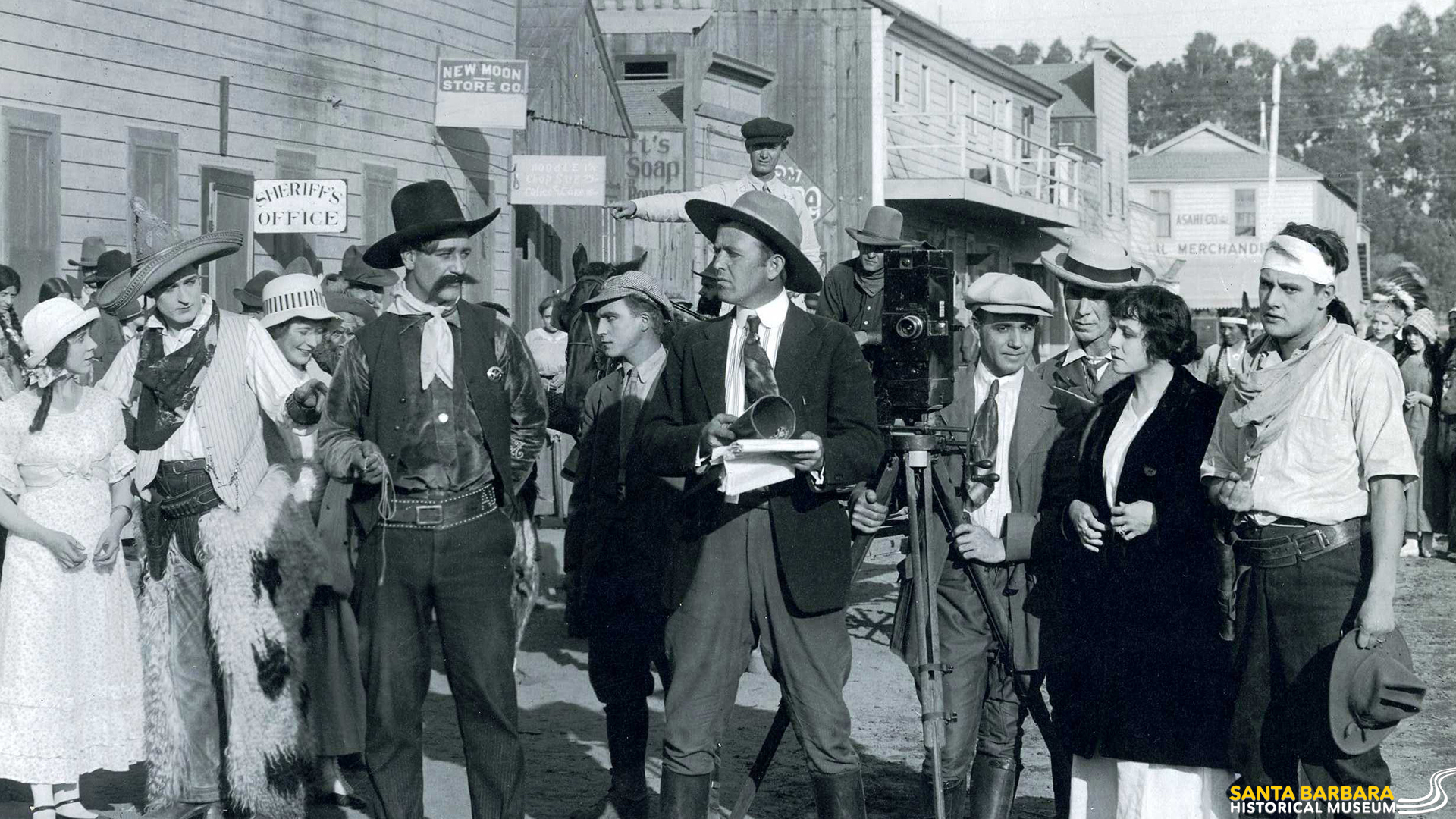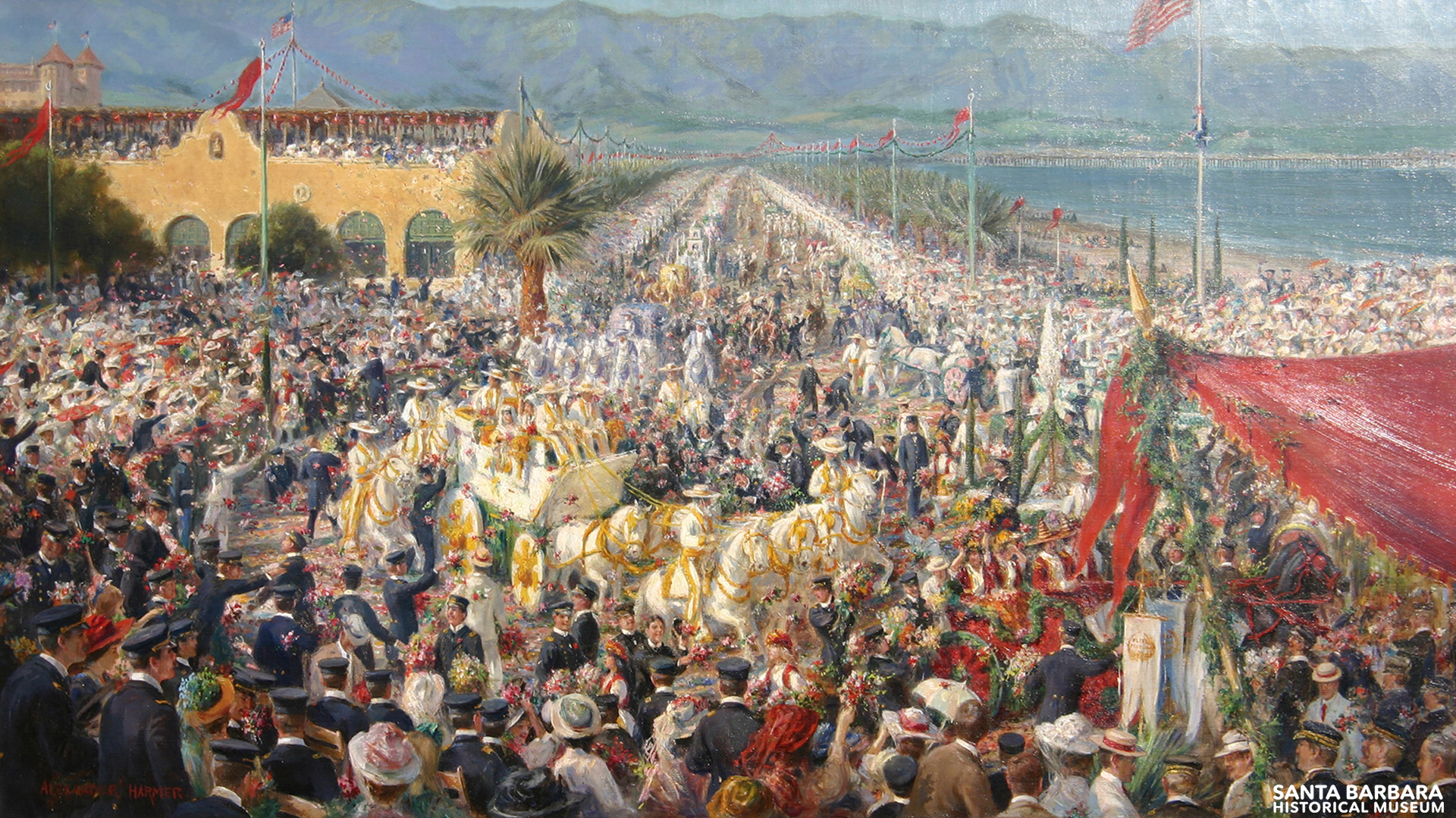Historical Backgrounds
We invite you to download free Video Conference backgrounds.
Like many people around the world, our staff are now working from home and are conducting meetings via video conference. To liven up yours we are offering some of the museum’s most iconic artworks and photographs from the permanent collection formatted and ready to use. Simply download the images using the links below.
Low Hills, 1923
Lockwood de Forest (American, 1850-1932)
Oil on canvas, 24 x 34
Gift of Kathleen & Oswald Da Ros
De Forest first visited Santa Barbara around 1900 and settled here in 1923. This is an example of a number of local landscapes he executed during his time here.
Navajo Horsemen in the Chin-Lee Valley, c. 1937
Carl Oscar Borg (Swedish, American, 1879-1947)
Oil on canvas, 35.25 x 51.25
Gift of Reginald W. Vaughan
After a childhood and early manhood spent in near poverty, Borg came under the patronage of Phoebe Apperson Hearst, mother of William Randolph Hearst. Borg’s travels through and images of the American Southwest were due in no small part to her support.
Flying A
Publicity photo
Gledhill Library Collection
Between 1912 and 1921, the influential and prolific operation of the American Film Company (also known as the "Flying A") made nearly one thousand silent films in Santa Barbara.
Battle of the Flowers, 1908
Alexander F. Harmer (American, 1856-1925)
Oil on canvas, 20 x 36
Gift of Louise & Glenn Idleman
In 1908, President Theodore Roosevelt dispatched elements of the U.S. Navy on an around-the-world cruise. One of the ports of call was Santa Barbara and one of the welcoming festivities was a parade, captured here.
Santa Bárbara Virgen y Mártir, c.1897
Edwin Deakin (born England, 1838-1923)
Watercolor on paper. 8.5 x 11.5 inches.
Collection made possible through the generosity of David Packard, Bernadette Castor, Winifred Vedder, John C. Woodward, Sally & David Martin and Frank Goss.
Founded in 1786 by Fr. Fermín Lasuén. Named for St. Barbara, executed by her pagan father due to her faith. The only mission with two matching towers. Religious services have been conducted continuously here since its founding. Deakin’s painting represents the mission as it looked in the 1890s.
Coastal Canyon Landscape, 1884
Henry Chapman Ford (1828-1894)
Oil on canvas, 21 x 33 1/2
Museum Acquisition Fund through the generosity of the Smith-Walker Foundation
The beginnings of Santa Barbara’s growth as an important art center may be traced to the arrival of Henry Chapman Ford in 1875, the first professional artist to call the South Coast home. His fascination with the natural world extended beyond his artwork and he became an instrumental figure in several societies dedicated to the study of the local flora and fauna.
The artwork and images on this page only are being made for personal, noncommercial use.






